Oaxaca - A friendly Small City of Art, Music and Architecture
![]()
Completing our month as residents of Ciudad de Mexico, we embarked on the next part of our Mexican Exploration. We left the comfortable environment of our neighborhood to ride the Metro to TAPO, the great bus station for buses heading east. We bought tickets, found our seats on the very comfy bus and settled for the 6½ hour ride. It took the first 45 minutes for the bus to escape the vast edges of the great city and proceed into the country.
The ride was spectacular. A toll road took us most of the way, through farmland and villages, past the city of Puebla, then on into forested mountains followed by high desolate tundra-like terrain and wild and rugged desert until the bus descended into the valley of Oaxaca. The approach to the middle of the city took us past a statue of Benito Juarez, a native son of Oaxaca and highly respected historical figure.
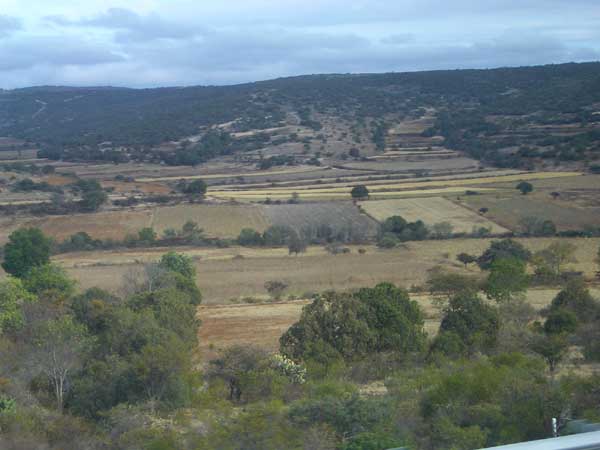
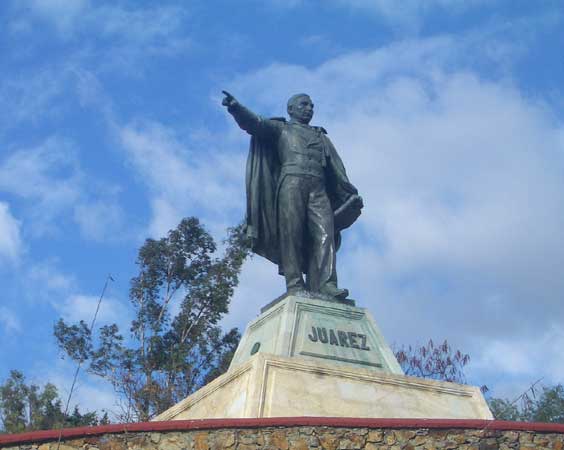
We had two objectives for this visit: to observe the people friendliness of this small city and to visit Monte Alban, the great sacred city of the Zapotecs. On the evening we arrived, we began to realize that this small city with it's Zocalo filled with people, great trees, and a pavilion where a band played, was a world away from Ciudad de Mexico.
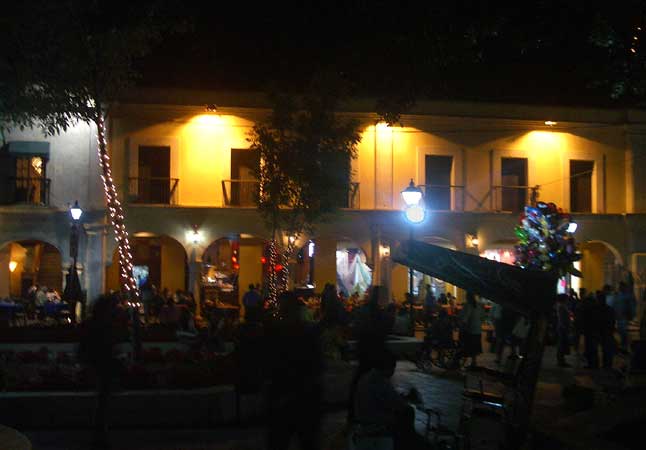
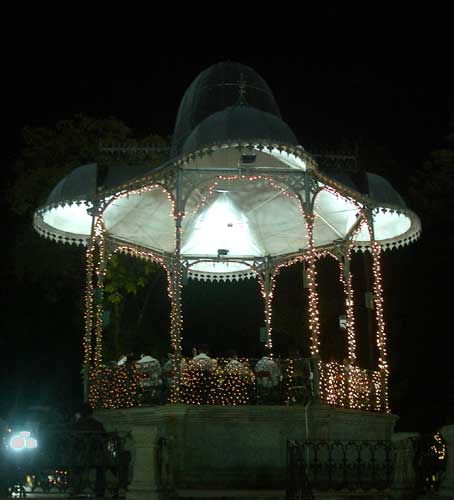
The next morning, observing the blue sky and white clouds that replaced the haze of Mexico City, we were even more certain of this! We spent the next three days experiencing the life of the city - visiting the museo, once the convent of the cathedral, strolling through the Zocolo and learning the art of relaxing over drinks and feasting on Oaxaceno cuisine at the cafes.
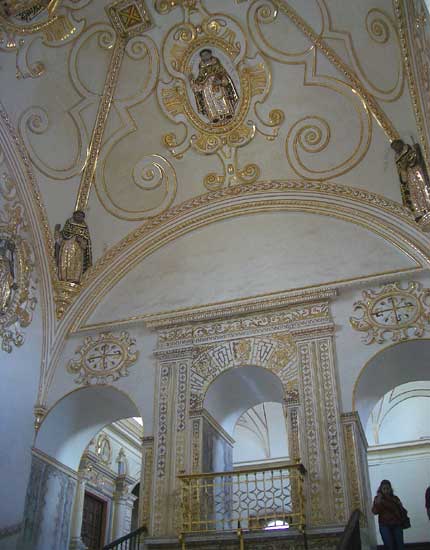
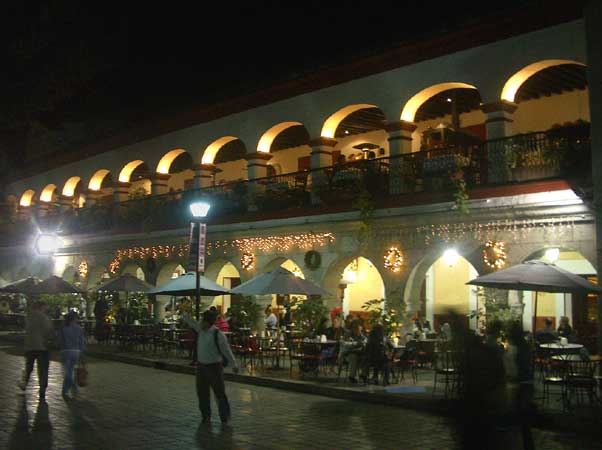
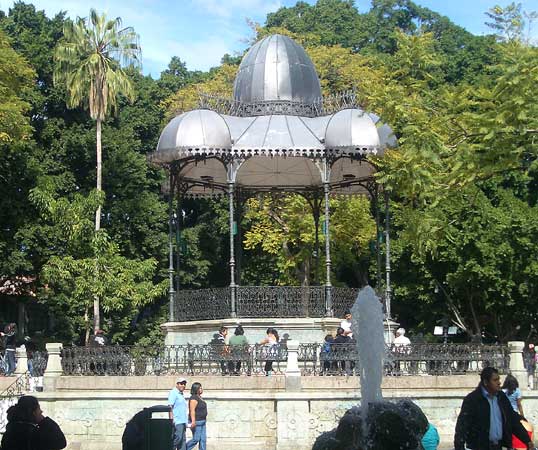
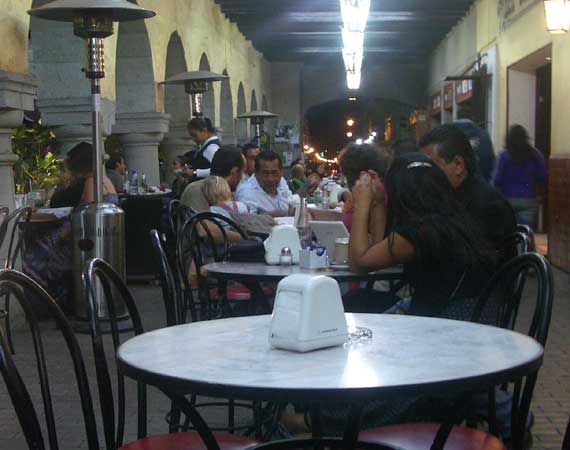
One another afternoon, we visited the Botanic Garden and were treated to a guided tour.
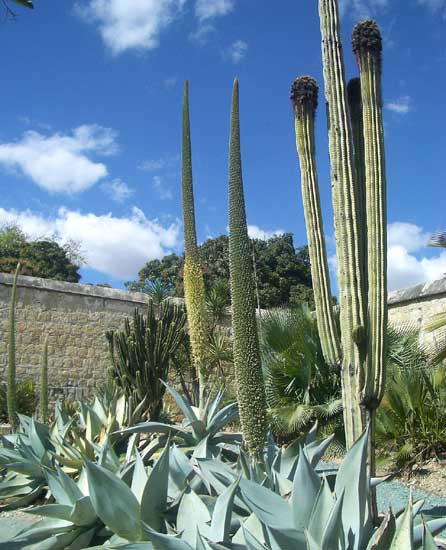
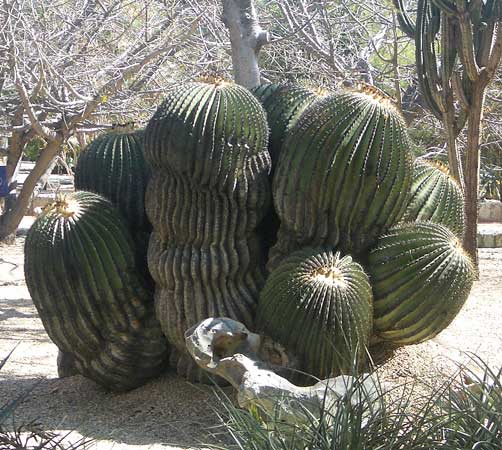
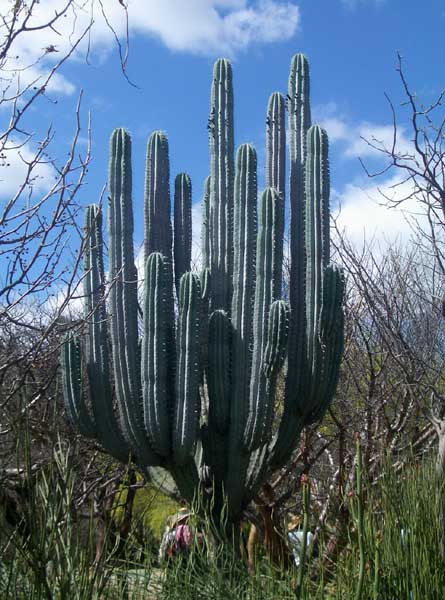
One evening a chorus of young singers offered us their sweet songs and on another afternoon in the Zocolo we were entertained by a band of young musicians.
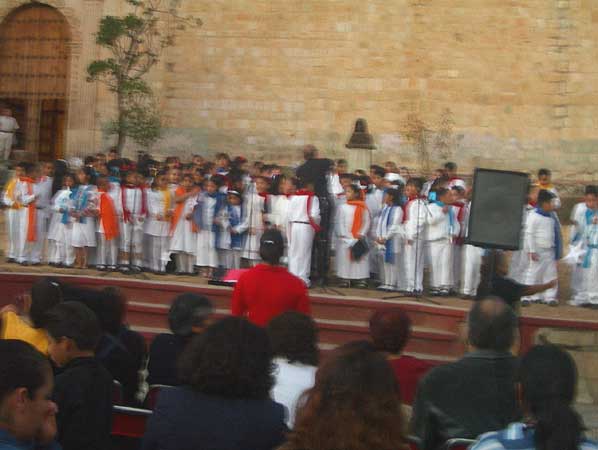
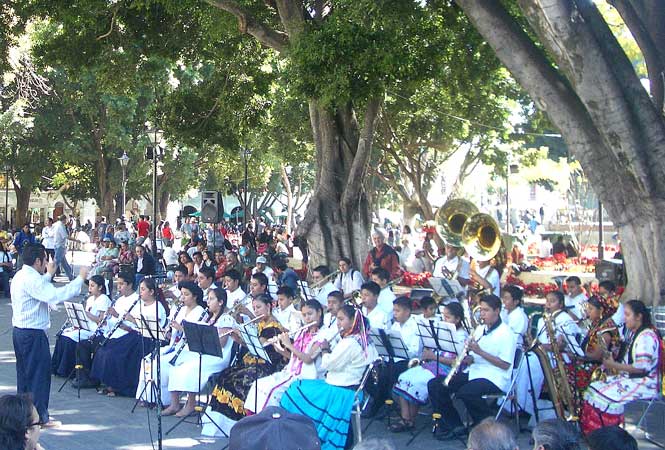
The fiesta in celebration of the 100th Anniversay of the Coronation of the Virgen de Soledad also took place during our visit with dancing and fireworks on the final day. Another day we happened on a wedding party with great dancing figures of the bride and groom entertaining guests and us, too.

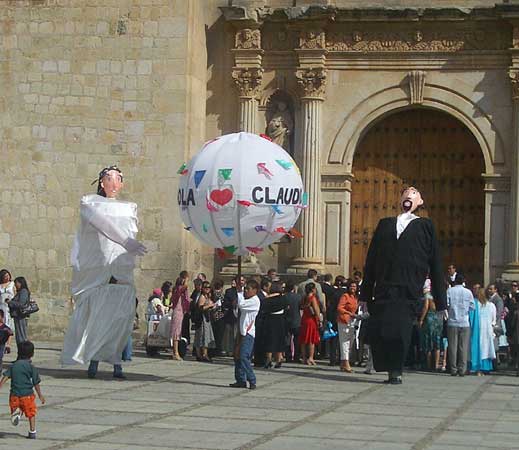
We discovered that Oaxaca had it's own architectural style characterized by one and two story buildings with large doors and windows whose facades sat close to the edge of the sidewalk. Most buildings were painted in ochre and brown tones but then we would encounter a bright blue one. The residential areas of the city were an eclectic mix of classic Oaxaca-style townhouses and owner built homes of concrete block.
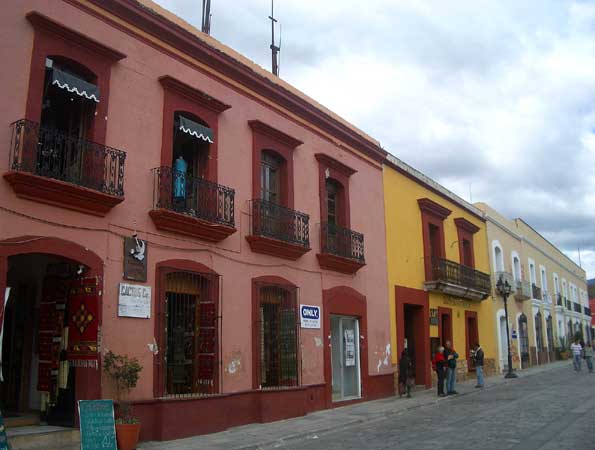
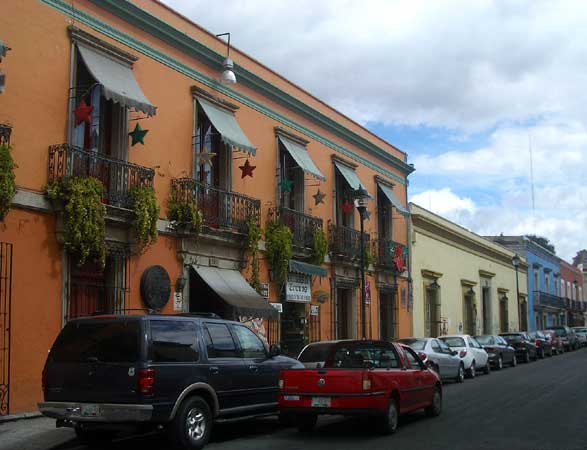
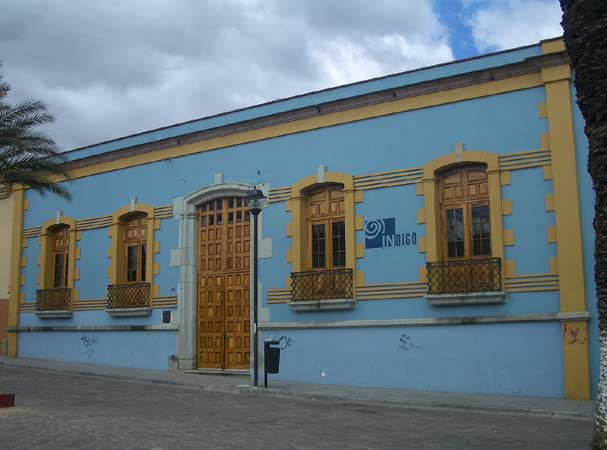
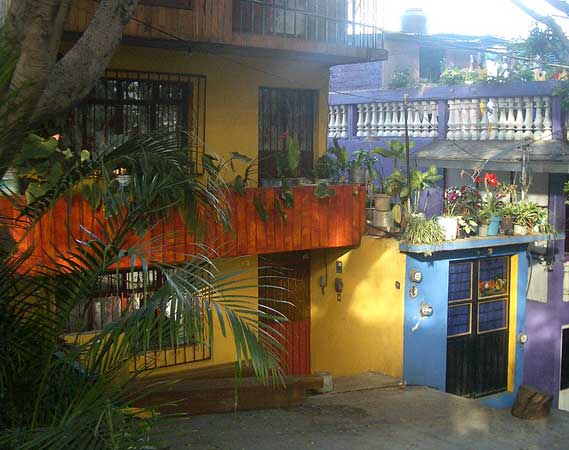
The merchants filling Oaxaca's Mercado offered an array of colorful foods: yummy looking verduras (vegetables), brilliant flowers, whole chickens, great mountains of mole (for sauce), chorizo and other meats, and chapulines (crunchy seasoned fried grasshoppers - we did not try these!).
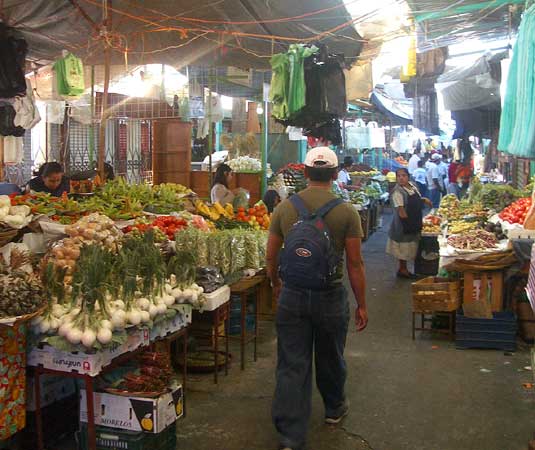
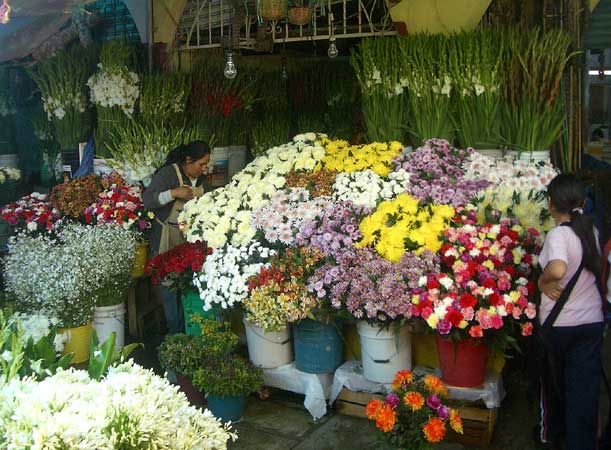
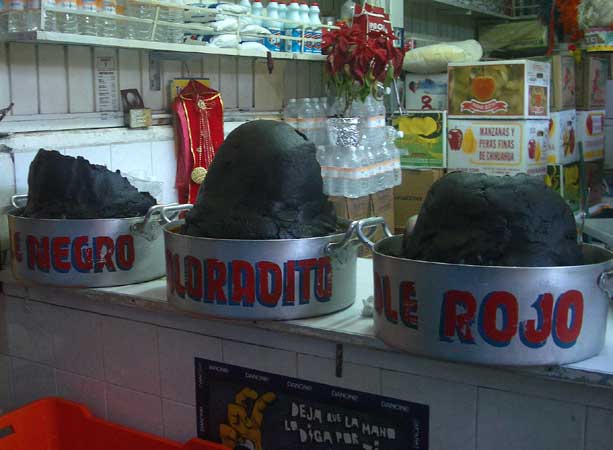
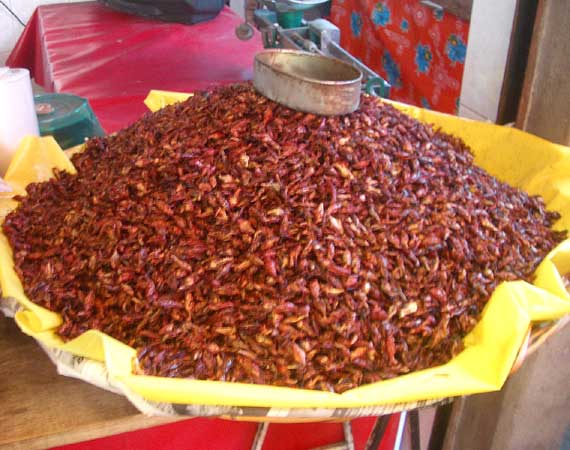
In the Centro Historico, the area surrounding the Zocalo and oldest part of the city, was also the business and retail center. The cathedral stood majestically on one side of the Zocalo and other lovely churches were scattered throughout the neighborhoods. Macedonio Alcala, the pedestrian street where most shops were concentrated, offered great window shopping and people watching.
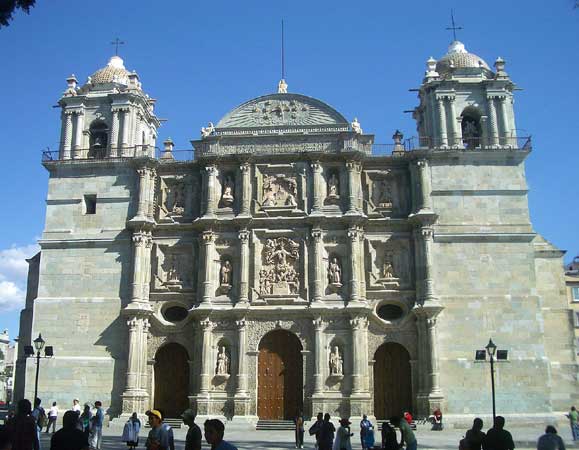
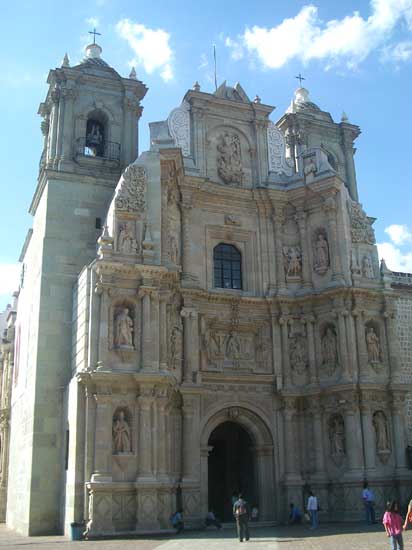
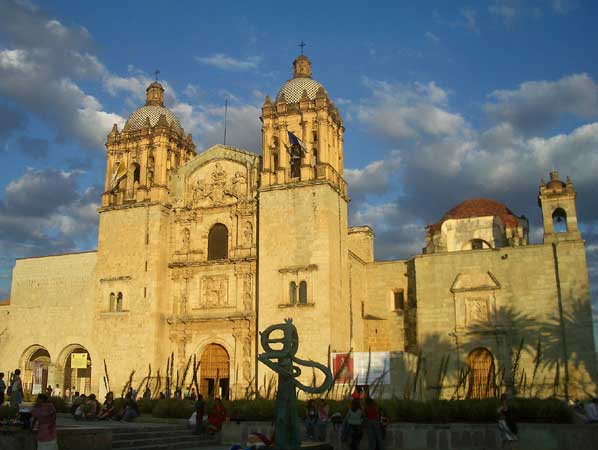
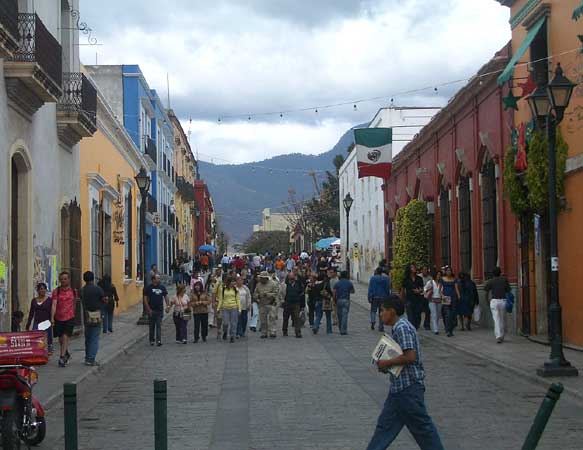
While visiting Oaxaca is best done on foot, we found that walking along the narrow sidewalks, we had to always be on alert for the large city buses that roared past us, sometimes very close to the curb!
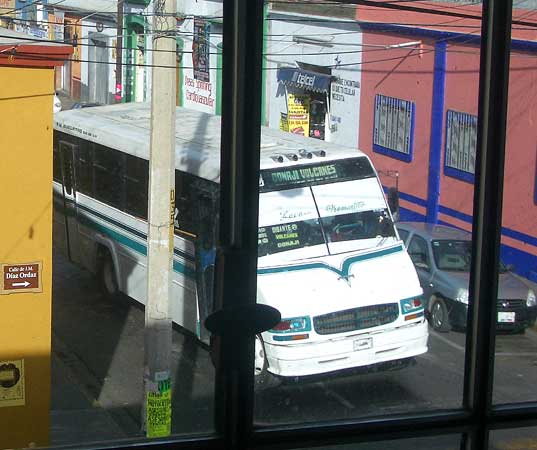
While these large buses provided quite functional public transit for the city, it seemed to us that they were more numerous than necessary based on our observation of the ridership (many were nearly empty), and were larger than appropriate for the narrow streets in the center of the city. While each bus had a list of destinations painted on the windshield they were nearly impossible for visitors to use since there were no designated routes, but that's our problem, not theirs.
Based on our short visit, we judged Oaxaca to be a very pleasant small (250,000 population) city with many strong people friendly aspects.
Click here to read our story about Monte Alban
Click here to return to Our Moving on to Mexico - Winter 2008-2009 page
![]()